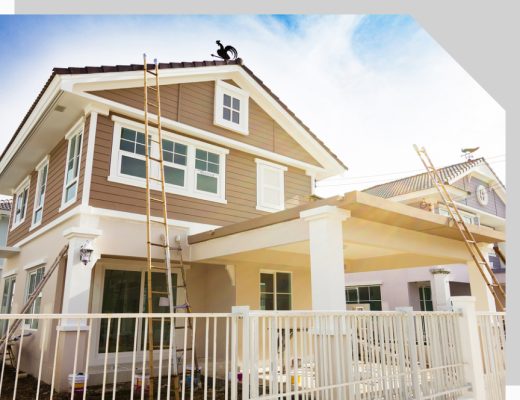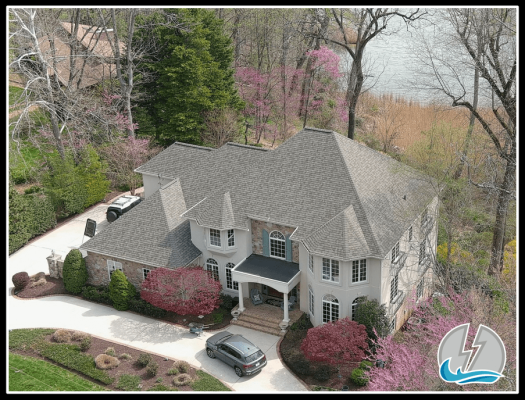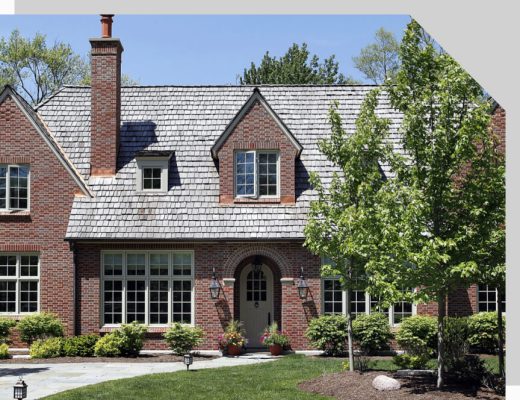Insulated Siding: Save Money and Enhance Home Performance
When it comes to home or building improvement, there are many options and services available to property owners. However, one of the most important investments you can make for your property is upgrading to insulated siding. Learn more about the importance of insulated siding for your home or property by calling our Edgewater siding contractors at 410-956-7663. We’ll provide you with a free, no-obligation estimate.

What Is Insulated Siding?
Insulated siding is a type of cladding designed to provide insulation and protection for your home or property’s exterior. It’s most often made from a combination of vinyl, foam insulation, and other materials that work together to create a barrier against the elements. Insulated exterior siding is typically installed over existing siding, making it a cost-effective and easy way to upgrade your home or property’s exterior. This is particularly important in Maryland’s variable climate, where homes face both hot summers and cold winters.
Types of Insulated Exterior Siding
There are various types of insulated exterior siding options, including:
- Insulated Vinyl Siding: The most popular type of insulated exterior siding is made from PVC plastic. It’s affordable, durable, and easy to maintain, making it an excellent choice for Maryland’s climate. Additionally, insulated vinyl siding offers enhanced thermal insulation and energy-saving benefits, helping to maintain comfortable indoor temperatures across seasons and potentially reducing long-term energy bills.
- Foam-Backed Insulated Siding: This type of siding has a layer of foam insulation added to the back, which provides additional energy efficiency benefits, particularly useful during Maryland’s humid summers and cold winters.
- Insulated Steel Siding: An insulated exterior siding made from steel that’s extremely durable and resistant to damage from weather and pests, perfect for coastal areas like Edgewater.
- Insulated Fiber Cement Siding: This insulated exterior siding is made from a mixture of cement, sand, and cellulose fibers, and is resistant to fire, insects, and rot, ideal for Maryland’s varying and sometimes extreme weather conditions.
- Insulated Wood Siding: A type of siding made from natural wood that has an additional layer of insulation added to the back. It provides a traditional and natural look that complements many architectural styles.

Advantages of Insulated Siding
Energy Efficiency Savings
Siding that comes pre-equipped with insulation can help reduce your energy bills. The foam insulation layer added to the siding can significantly reduce heat loss, keeping your property warmer in the winter and cooler in the summer.
Durability in Extreme Weather
Insulation provides durability and resistance to damage from weather, insects, and moisture. It can protect your property’s exterior from the elements and can withstand high winds, hail, and other types of severe weather.
Low Maintenance
Insulated siding requires little maintenance, which can save you time and money. Unlike traditional siding, which needs to be painted or stained periodically, insulated siding retains its color and finish for years.
Noise Reduction
Property owners who invest in insulated exterior siding can enjoy reduced noise from the outside, making their property much quieter, more comfortable, and more peaceful. The foam insulation layer helps absorb sound, reducing the amount of noise entering.
Improved Property Value
Insulated exterior siding can enhance your property’s value, making it a wise investment for any homeowner. It can increase your home’s curb appeal and make it more attractive to potential buyers if you decide to sell in the future.
Disadvantages of Insulated Siding
Cost
Insulated exterior siding can be more expensive than traditional siding materials, which may not be feasible for some homeowners and building owners. The higher initial cost of insulated siding can be a deterrent. However, this cost is often offset by the significant benefit of a limited lifetime transferable warranty, which instills confidence in both professionals, homeowners, and other property owners by underscoring the durability and maintenance-free characteristics of the siding.
Limited Color Options
Insulated exterior siding typically has fewer color options than traditional siding materials, which may limit the products’ aesthetic appeal for homeowners and building owners.
Difficult to Repair
If the siding is damaged, it can be difficult and expensive to repair. This may result in the need for complete replacement.
Installation Issues
If the installation isn’t done correctly, it can cause moisture problems or air leaks, which can negate the energy efficiency benefits of the siding.

Insulated Siding Installation
While the specific steps for installing insulated exterior siding can vary depending on the type and style of siding and the specific installation instructions, some general steps typically involve:
- The surface where the siding will be installed should be clean, dry, and flat. Any old siding or debris should be removed, and any necessary repairs made.
- Underlayment should be installed to provide additional protection against moisture and damage.
- A starter strip should be installed along the bottom of the wall to provide a secure base for the siding.
- Corner posts should be installed at the corners of the wall to provide stability and support for the siding.
- Begin installing the siding panels at the bottom of the wall and work your way up. Each panel should be secured with nails or screws, and the joints should be overlapped to provide a tight seal.
- Trim pieces should be installed around windows, doors, and other openings to provide a finished look and additional protection against moisture.
- After the siding is installed, any gaps or joints should be sealed with caulk or foam insulation to prevent air and moisture from entering.
- Properly dispose of any debris or materials once the siding is installed.
Proper siding installation is crucial to ensuring your insulated siding performs as intended and provides energy efficiency benefits for your home or building. If you’re not comfortable or skilled with installing siding yourself, it’s best to hire a professional installation service like Thunder Bay Roofing to do it for you. Hiring exterior experts ensures that the siding is installed correctly and efficiently, providing long-lasting protection and aesthetic appeal.
Insulated Siding Maintenance
If you want to enjoy the benefits offered by insulated exterior siding, make certain to take good care of it with regular maintenance. The necessary steps for maintaining insulated siding include the following:
- Regular Cleaning: Insulated siding should be cleaned at least once a year to remove dirt, debris, mold, or mildew growth.
- Use the Right Cleaning Solution: Use a mild detergent and water solution to clean your siding. Avoid using abrasive cleaners or pressure washers, as they can damage the siding.
- Inspect for Damage: Regularly inspect your siding for any signs of damage, such as cracks, dents, or holes. Address any issues promptly to prevent further damage.
- Check for Gaps: Inspect your siding for any gaps or spaces where air or moisture can enter. Seal any gaps with caulk or foam insulation.
- Trim Vegetation: Keep any vegetation around your home trimmed back to prevent it from touching or damaging your siding.
- Avoid Heat Sources: Keep heat sources, such as grills or fire pits, away from your siding to prevent damage or discoloration.
- Consider Professional Cleaning: If you don’t feel comfortable cleaning your siding yourself, consider hiring a professional cleaning service to do it for you.
Homes Best Suited for Insulated Exterior Siding
Ultimately, insulated siding is a good idea for every home and commercial or industrial building. However, insulation is especially recommended for properties with the following traits:
- Located in areas with extreme temperatures, whether it’s extreme heat or cold
- Poor insulation or inefficient heating and cooling systems
- Insulated vinyl siding can provide enhanced thermal insulation and energy-saving benefits, maintaining a comfortable indoor
- temperatures and reducing energy bills
- Located in areas with high winds, heavy rain, or other extreme weather conditions
- Older properties that may have drafty windows or doors, or other areas that are difficult to insulate
- Properties prone to mold or moisture issues
- Properties exposed to noise pollution
- Properties that have high energy costs
Frequently Asked Questions
While insulated siding may cost slightly more than traditional siding, the long-term energy savings and durability make it a wise investment for any home or building owner.
While it’s possible to install insulated siding yourself, it’s recommended to hire a professional contractor. A professional installer can ensure the siding is installed correctly, which will help prevent any issues down the road.
The lifespan of insulated siding can vary depending on the quality of the materials and the installation. However, most manufacturers offer warranties that range from 20 to 40 years. With proper maintenance and care, insulated siding can last even longer, potentially even for a lifetime.
